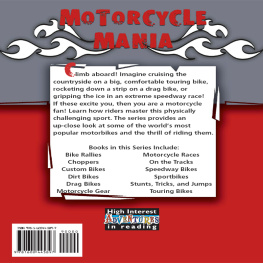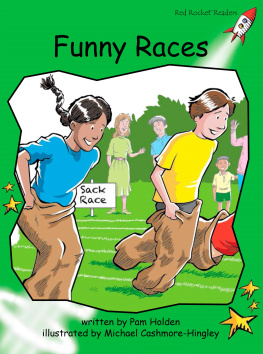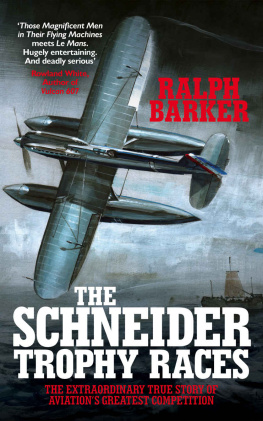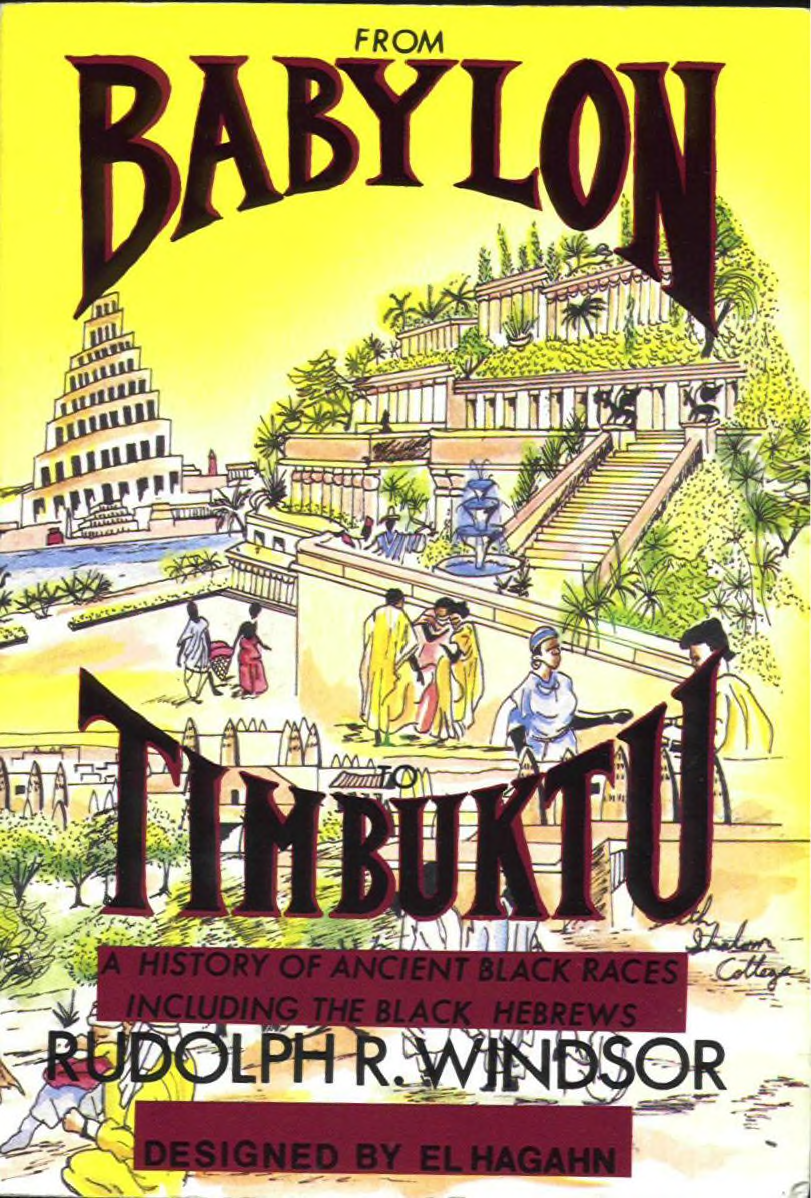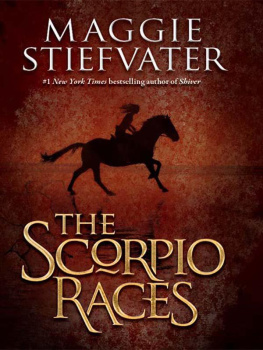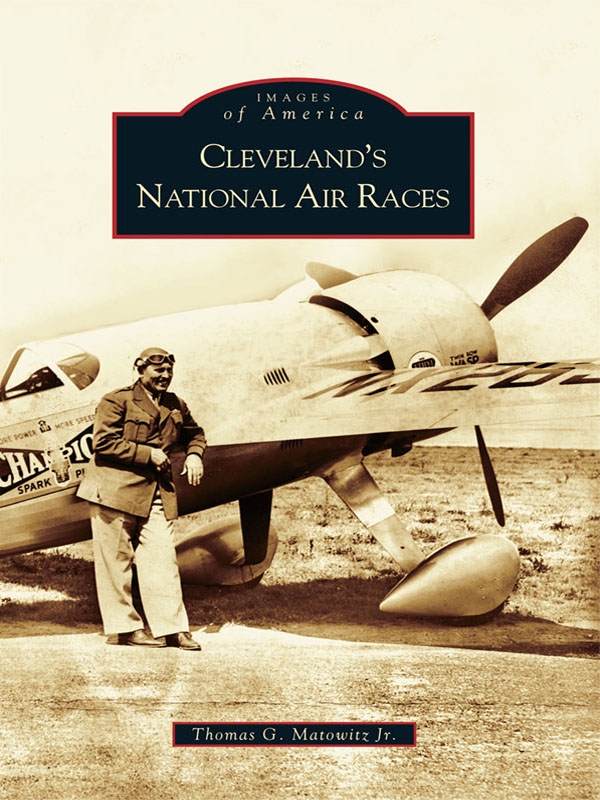ACKNOWLEDGMENTS
It is a pleasure to thank the following people and organizations for their help with the preparation of this book.
At Clevelands International Womens Air and Space Museum, Cris Takacs and Joan Hrubec were very generous with their time and the loan of invaluable research materials.
At Cleveland State University (CSU), Special Collections librarian William C. Barrow made more than 100 images from the Cleveland Press Collection available for my use. This is not the first time he has gone far out of his way to help me get a book into print, and I am very grateful.
Without the warm cooperation of Lynn Duchez Bycko from the Cleveland State University Librarys Digital Production Unit, I am not sure the book would exist in its present form. Her constant help throughout this project is much appreciated.
My late friend, Jim Young, spent a lifetime collecting a wonderful assortment of aviation photographs. Several appear in this book with the kind permission of his family.
Karl Engelskirger taught me how to fly a tail dragger in the 1990s and has remained a close friend ever since. He provided critical leads to information and photographs that were extremely helpful.
Several outstanding photographs appear in these pages through the courtesy of Bernadine Crozier and Molly Tewksbury.
My friend and colleague Matt Grabski provided sound insights and good-natured encouragement as we researched two books concurrently. I hope his forthcoming Arcadia Publishing book about Clevelands Flats reaches a wide audience.
In the course of a number of early morning conversations, my friend David C. Holcombe answered a wide range of air-racing questions with patience and accuracy.
Finally I thank Joe Binder, age 86, for his warmth, courtesy, and willingness to share both his personal photograph collection and his remarkable firsthand knowledge of golden age racing planes and the pilots who flew them.
Thomas G. Matowitz Jr.
Mentor, Ohio
September 15, 2005
AFTERWORD
Roscoe Turner announced his retirement from air racing after winning the Thompson Trophy for the third time, in 1939. Aged 43, he said pylon racing was a young mans game and then gracefully walked away. Far from the Corinth, Mississippi, of his youth and the Hollywood of his heyday, he settled in Indianapolis, Indiana, where he ran a very successful fixed base operation for years. His flight school participated in the Civilian Pilot Training Program and sent hundreds of young men off to World War II military flight training armed with an edge they could not have gained anywhere else, the knowledge that Roscoe Turner taught them how to fly.
Gilmore, the lion cub, grew up and eventually weighed nearly 700 pounds, making him far too large for any cockpit. He was returned to the wild animal park where Turner obtained him. As long as the animal lived, Turner sent money every month to pay for his care. Questioned by skeptical friends, Turner explained that the lion had paid his way for so long that he felt obligated to him. Stuffed and mounted, Gilmore is in the National Air and Space Museum. His status as the only lion in the collection of a major aviation museum is likely to remain unchallenged. Roscoe Turner died in May 1970 at age 74. His Laird Turner Racer is in the National Air and Space Museum. The Wedell-Williams racer, which served him so faithfully, is on display at Clevelands Crawford Auto-Aviation Museum. It is the only surviving example of its type.
The fame the National Air Races brought Jimmy Doolittle never dimmed. Ten years after he gave up air racing on the grounds that it was too dangerous, he conceived and led the single most daring air combat mission of World War II. On April 18, 1942, Doolittle was at the controls of the first of 16 B-25s to launch from the aircraft carrier USS Hornet . Their target was Tokyo, which they bombed in the first American counterattack against Japan. Doolittles detailed report on the mission did not use the word I once. Recognition he did not seek came in the form of a Medal of Honor. He went on to command the 8th Air Force with the rank of lieutenant general. After the war, he resumed his career with Shell Oil. In later years, he gave up flying voluntarily but never lost his interest in aviation. Having survived some of the most intense high-risk flying ever undertaken, Jimmy Doolittle lived to become one of the most honored figures in aviation history. He died peacefully in his bed at age 96.
Blanche Noyes was Clevelands local favorite to win the 1929 Womens Air Derby. She placed fourth. If she was disappointed, she did not show it. In 1936, she teamed with her onetime competitor Louise Thaden. Together they flew a Staggerwing Beech to victory in the Bendix Trophy Race, handily defeating the male pilots who challenged them. Blanche Noyes remained active in aviation for the rest of her life, serving on the staff of the Federal Aviation Administration in Washington, D.C. for many years. She died in 1981.
Steve Wittman continued to race long after his contemporaries chose to retire. In 1979, on the 50th anniversary of the 1929 National Air Races, he appeared at the Cleveland National Air Show not as a fragile exhibit but as a fierce competitor who outflew pilots decades younger than himself. Actively flying into the 1990s, Wittman lost his life as the result of an in-flight structural failure during a routine cross-country flight. His best remembered racer, Bonzo , is on display at the EAA Museum in Oshkosh, Wisconsin.
Cliff Henderson, whose skilled promotion made the National Air Races such a remarkable success, also announced his retirement in 1939. He served with distinction in the Second World War, leaving the military as an Army Air Forces colonel. He visited Palm Desert, California, after the war to recover from an illness contracted while serving in Africa. He bought property there and went on to great success as a real-estate developer. He died in 1984. Later promoters carefully noted the marketing strategies Henderson mastered in the 1930s. For many years, air shows and air racing have drawn larger crowds worldwide than any other category of sporting event.
The Cleveland Municipal Airport the air racers knew no longer exists. Extensive renovations beginning in the 1950s have altered the facility beyond recognition, and even its name has been changed. It is now known as Cleveland Hopkins International Airport. The airport originally chosen because it was the largest in the world has become the subject of local controversy because some consider it too small to adequately meet Clevelands needs. The huge grassy surface that was once the airports hallmark has been replaced with a massive grid of paved runways and taxiways. The area where the grandstands stood in the 1930s is now the site of a large NASA facility. From the air, the only prominent landmark remaining from the 1930s is the graceful arched bridge that carries Brookpark Road across the valley at the airports western edge.
The air racers and the vast throngs who cheered them are gone now. The smell of jet fuel has long since supplanted the roar of radial engines, but echoes of the races resound to this day. A generation of boys and girls was inspired to fly. It is estimated that the air races may have led 100,000 young Americans to become aviators in the Second World War. The airplanes they flew to victory were vastly better because of technical advances that resulted directly from air racing. Many women served capably as Womens Air Force Service Pilots during the war, and the standards they set led women to the cockpits of commercial airliners years later and, eventually, to the space shuttle.




